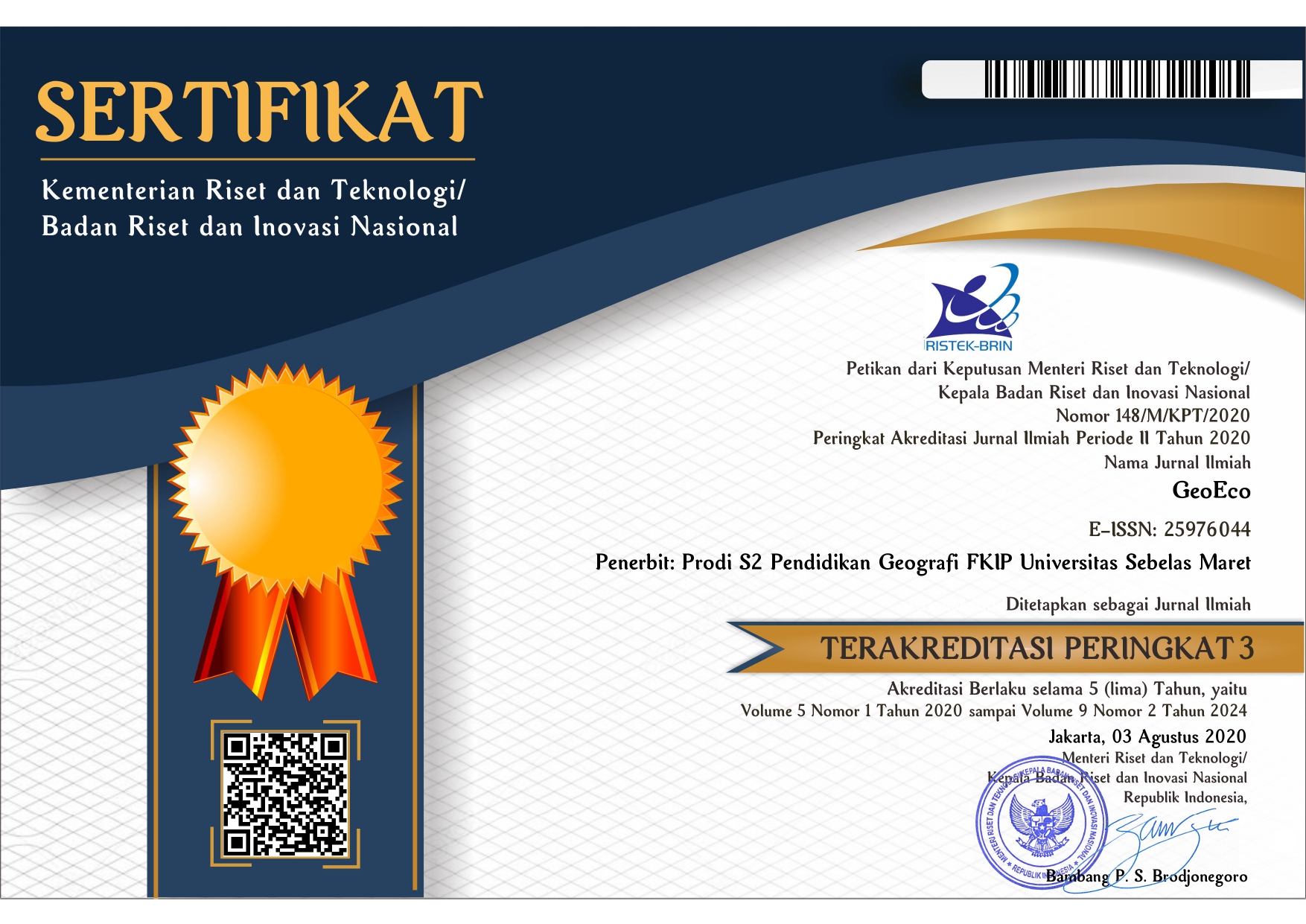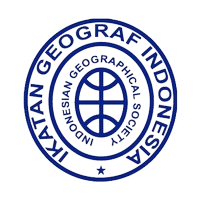THE DEVELOPMENT MODEL OF COMMUNITY-BASED TOURISM IN NAGARI KOTO SANI, SOLOK REGENCY, WEST SUMATRA
Abstract
The development of a community-based tourism village gives wider authority to the community to manage the potential of their village and has an impact on improving the economy and sustainable development. The purpose of this research was to find a community-based tourism development model in Nagari Koto Sani which has natural and cultural potential as a tourism village. This qualitative approach of research collects data through observation, interviews, focused discussions and documentation studies. The data is then analyzed using qualitative analysis with triangulation, so that the data obtained is valid and saturated. The results of the research show that the development model of community-based tourism village consists of three main stages, i.e., planning, implementation and reflection. Activities at the planning stage include, 1) identification of the potential of the village (Nagari), 2) focused discussions regarding the views and aspirations of the community, 3) preparation of the RIPPDES draft, 4) focused discussions regarding familiarization of the tourism village program. Then, the activities at the implementation stage are 1) community awareness, 2) strengthening local resources, 3) cooperation between stakeholders, and 4) tourism village promotion. Finally, at the reflection stage, the activities carried out are 1) observation and monitoring, 2) follow-up plans.
Keywords
Full Text:
PDFReferences
Amin, A., & Ibrahim, Y. (2015). Model of Sustainable Community Participation in Homestay Program. Mediterranean Journal of Social Sciences, 6(3), 539–545. https://doi.org/10.5901/mjss.2015.v6n3s2p539
Asri, A. (2021). PEDOMAN DESA WISATA.
Badan Pusat Statistik. (2018). Jumlah Devisa Sektor Pariwisata, 2015-2018. https://www.bps.go.id/dynamictable/2018/05/22/1357/jumlah-devisa-sektor-pariwisata-2015-2018.html
Croes, R. (2014). The role of tourism in poverty reduction: An empirical assessment. Tourism Economics, 20(2), 207–226. https://doi.org/10.5367/te.2013.0275
Dolezal, C., & Novelli, M. (2022). Power in community-based tourism: empowerment and partnership in Bali. Journal of Sustainable Tourism, 30(10), 2352–2370. https://doi.org/10.1080/09669582.2020.1838527
Gabriel-Campos, E., Werner-Masters, K., Cordova-Buiza, F., & Paucar-Caceres, A. (2021). Community eco-tourism in rural Peru: Resilience and adaptive capacities to the Covid-19 pandemic and climate change. Journal of Hospitality and Tourism Management, 48, 416–427. https://doi.org/10.1016/J.JHTM.2021.07.016
Goh, H. C. (2015). Nature and Community-based tourism (CBT) for poverty alleviation: A case study of Lower Kinabatangan, East Malaysia.
Janianton Damadik, Esti Cemporaningsih, Fernando Marpaung, Destha Titi Raharjana, Erda Rindrasih, Henry Brahmantya, & Wijaya. (2018). Membangun Pariwisata Dari Bawah. Gajah Mada University Press.
Kebete, Y., & Wondirad, A. (2019). Visitor management and sustainable destination management nexus in Zegie Peninsula, Northern Ethiopia. Journal of Destination Marketing & Management, 13, 83–98. https://doi.org/10.1016/J.JDMM.2019.03.006
Lee, T. H., & Jan, F. H. (2019). Can community-based tourism contribute to sustainable development? Evidence from residents’ perceptions of the sustainability. Tourism Management, 70, 368–380. https://doi.org/10.1016/J.TOURMAN.2018.09.003
Made Heny Urmila Dewi, Chafid Fandeli, & M Baiquni. (2013). Pengembangan Desa Wisata Berbasis Partisipasi Masyarakat Lokal di Desa Wisata Jatiliwih Tabanan, Bali. In Jurnal Kawistara (Vol. 3, Issue 2). https://jurnal.ugm.ac.id/kawistara/article/view/3976/3251#.ZF8X7rqGFp0.mendeley
Mahanani, Y. P., & Listyorini, H. (2021). Pengembangan Pariwisata Berbasis Masyarakat Guna Meningkatkan Perekonomian Masyarakat Lokal Di Desa Wisata Cempaka, Bumijawa, Kabupaten Tegal.
Nyoman S. Pendit. (1990). Ilmu pariwisata : sebuah pengantar perdana.
Oka A Yoeti. (2016). Perencanaan dan Pengembangan pariwisata. PT Balai Pustaka (Persero).
Okazaki, E. (2008). A Community-Based Tourism Model: Its Conception and Use. Journal of Sustainable Tourism, 16(5), 511–529. https://doi.org/10.1080/09669580802159594
Ramkissoon, H. (2023). Perceived social impacts of tourism and quality-of-life: a new conceptual model. Journal of Sustainable Tourism, 31(2), 442–459. https://doi.org/10.1080/09669582.2020.1858091
Sindonewe.com. (2020). Terbesar, Potensi DevisaParekraf 2020 Capai Rp616 Triliun. Terbesar, Potensi Devisa Parekraf 2020 Capai Rp616 Triliun.
Sulis Purwanto. (2019). ECOLOGICAL RESTORATION IN NATURAL CONSERVATION TOURISM AREA. International Journal of Tourism, Heritage and Recreation Sport., 1(1), 24–27.
Tolkach, D., & King, B. (2015). Strengthening Community-Based Tourism in a new resource-based island nation: Why and how? Tourism Management, 48, 386–398. https://doi.org/10.1016/J.TOURMAN.2014.12.013
Wondirad, A., & Ewnetu, B. (2019). Community participation in tourism development as a tool to foster sustainable land and resource use practices in a national park milieu. Land Use Policy, 88, 104155. https://doi.org/10.1016/J.LANDUSEPOL.2019.104155
Zielinski, S., Jeong, Y., & Milanés, C. B. (2021). Factors that influence community-based tourism (CBT) in developing and developed countries. Tourism Geographies, 23(5–6), 1040–1072. https://doi.org/10.1080/14616688.2020.1786156












.png)

